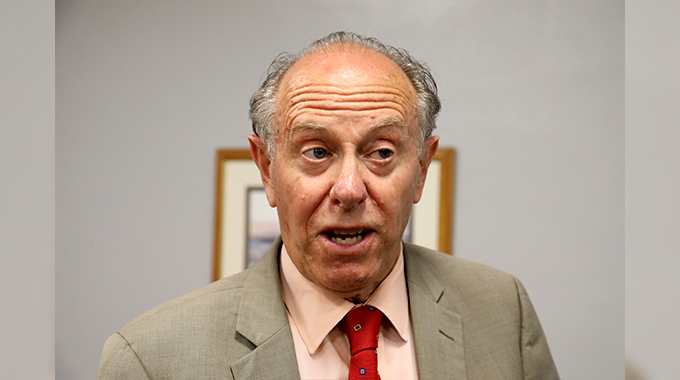Parenting children with seasonal allergies

Andile Tshuma
I don’t know what’s happening with the weather in Bulawayo lately. Just the other Saturday, we were freezing in the cold and had to retrieve our winter wear. Sunday and Monday were relatively cold. But today, we’re experiencing very hot weather and the scorching sun is just unforgiving. Unfortunately such sudden extreme weather changes are not good for people with allergies, especially children.
Schools opened this week and the pollen season is upon us. Children tend to get sick a lot mostly from allergies during this period. Parents and teachers have a diffcult time nursing kids who fall sick as a result of pollen.
Life is better when you know what your child reacts to and very difficult if you are ignorant.
If it’s your baby’s third sneezing fit of the morning there is every reason to suspect the sneezing, congestion and runny nose have something to do with the recent weather change. In the event he gets similar symptoms at the same time every year, you’re likely right, seasonal allergies are at work.
Seasonal allergies, sometimes called “hay fever” or seasonal allergic rhinitis, are allergy symptoms that happen during certain times of the year, usually when trees, grasses and weeds release tiny pollen particles into the air to fertilise other plants.
Allergies rank first among children’s chronic conditions and children’s allergy symptoms rank high on the frustration scale for parents looking for causes and solutions for screaming helpless babies.
More than 10 million children globally have asthma, inhalant allergies and food allergies, according to the World Health Organisation.
To protect your child from allergies at home and at school, you need to know exactly what your child is allergic to and what will trigger their allergy symptoms. Parenting for kids with allergies means knowing about indoor allergies, outdoor allergies and food allergies
The immune systems of people who are allergic to pollen, dust mites, pets and hay treat these particles as invaders and release chemicals, including histamine into the bloodstream to defend the body. It’s the release of these chemicals that causes allergy symptoms.
People can be allergic to one or more types of pollen, mold or plants, or even food. The type someone is allergic to determines when symptoms happen. The vegetation around your house may also trigger reactions. In Bulawayo, most people with allergies, young and old are intolerant to the jacaranda tree and the time when the city is purple and beautiful gives them the worst frustration.
Even kids who have never had seasonal allergies in years past can develop them. Seasonal allergies can start at any age though they usually develop by the time someone is 10 years old and reach their peak in the early twenties, with symptoms often disappearing later in adulthood.
If your child develops a “cold” at the same time every year, seasonal allergies might be to blame. Allergy symptoms, which usually come on suddenly and last as long as a person is exposed to the allergen, can include sneezing, itchy nose and/or throat, nasal congestion, clear, runny nose and coughing.
Seasonal allergies are fairly easy to identify because the pattern of symptoms returns from year to year following exposure to an allergen.
Talk to a doctor if you think your child might have allergies. The doctor will probably ask about symptoms and when they appear and based on the answers and a physical exam, should be able to make a diagnosis. If not, the doctor may refer you to an allergist for blood tests or allergy skin tests.
There are many ways to treat seasonal allergies depending on how severe the symptoms are. The most important part of treatment is knowing what allergens are at work. Some kids can get relief by reducing or eliminating exposure to allergens that bother them.
If certain seasons cause symptoms, keep the windows closed from the direction that the wind blows from, if possible. It’s also a good idea for kids with seasonal allergies to wash their hands or shower and change clothing after playing outside.
If reducing exposure isn’t possible or is ineffective, medicines can help ease allergy symptoms. These may include decongestants, antihistamines, and nasal spray steroids. If symptoms can’t be managed with medicines, the doctor may recommend taking your child to a specialist allergist or immunologist for evaluation and further assistance. A number of antihistamine options are available at pharmacies.
Allergy exposure at school includes many of the same risks that you find at home but there is an added danger if your child has a food allergy. The most common food allergies for kids are milk, eggs, peanuts, wheat, soy, and tree nuts.
Before school starts, it’s important for parents to meet teachers and the school nurse to discuss the child’s allergies and medication issues. Find out what the school policy is on medications, in case your child gets sick and someone administers medication that your child is allergic to.
Make sure your child, your child’s friends, the teacher, and the school know about any food allergy. Chalk dust, hay fever, food allergies and insect stings are some common allergy problems encountered at school.
It might be a good idea to tour the school before school starts to anticipate possible allergy dangers. For some children, especially those with asthma, exercise can trigger allergy symptoms. Talk to the school officials and coaches about recognising any exercise-induced allergy symptoms and let them know if your child needs to use an inhaler before exercise.
Good parenting for a child with allergies or asthma means working closely with your child’s doctors and educating yourself about allergies. Make sure that you, your child, your child’s friends and the school authorities know which allergy symptoms could signal a serious allergy attack. With proper medical evaluation, preparation, and communication, most children can be safe both at home and at school. Happy third and final term of the year, happy parenting!










Comments